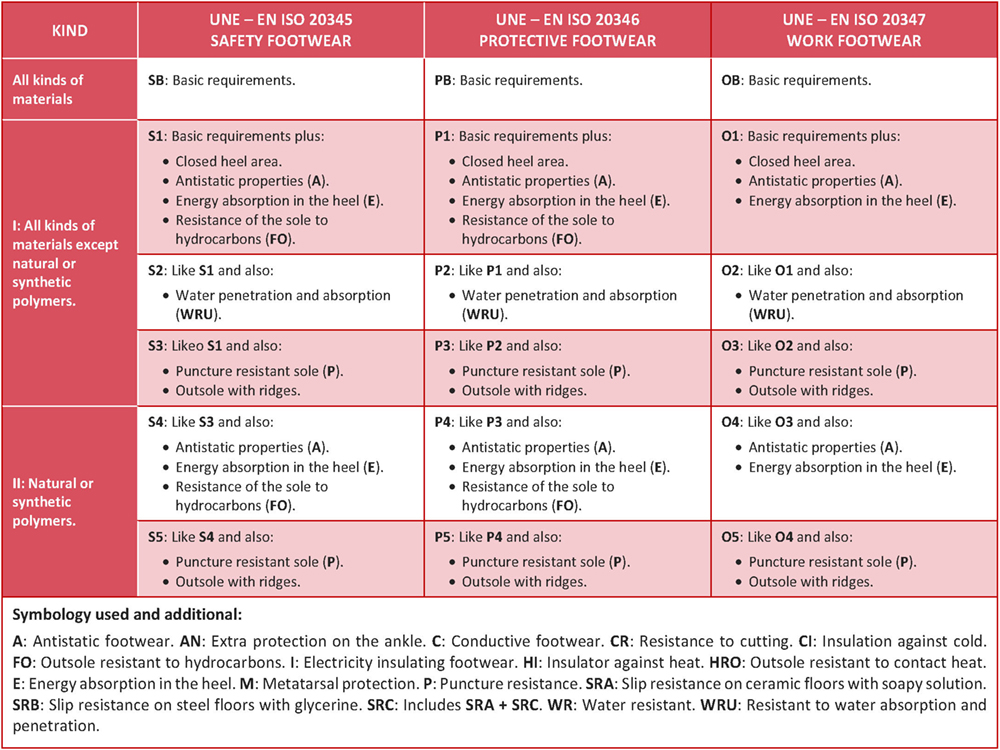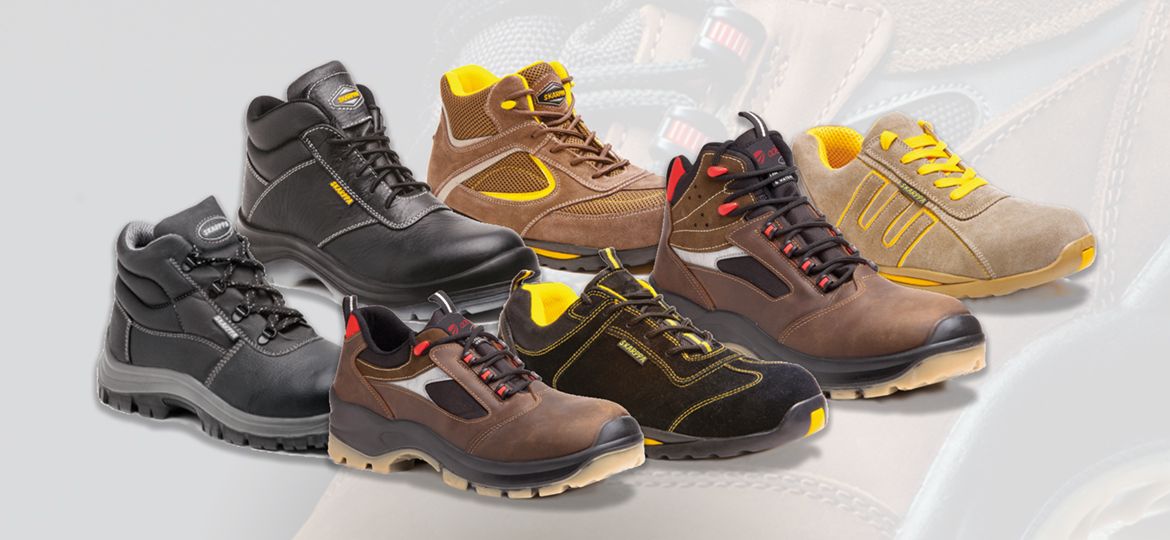
Footwear as Personal Protective Equipment
Personal protective footwear is one of the fundamental elements of protection in the work environment; its use is vital for both prevention and safety against different risks that can cause serious injuries to the worker.
This type of footwear as individual protection equipment must be used when the risks present in the workplace cannot be avoided with the existing technical means of collective protection or with the work organization measures or procedures.

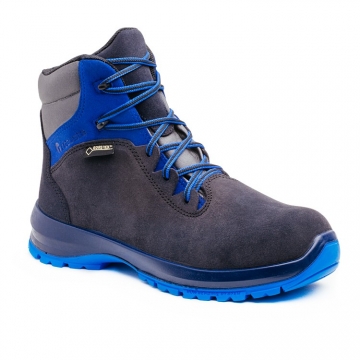
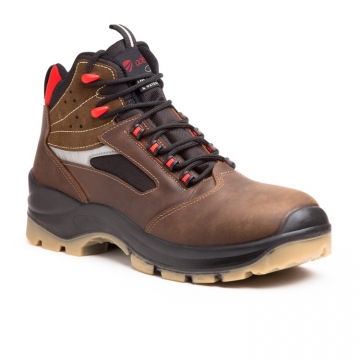
Premium quality protective footwear, for use in different industrial sectors.
Broadly speaking, depending on the degree of protection, there are three types of footwear:
- Safety footwear: It is the one that offers the highest degree of protection. It is equipped with a safety toe cap to protect the front part of the foot, and its design offers protection against impact with an energy level of at least 200 J and against compression with a load of at least 15 kN.
- Protective footwear: Occupies an intermediate position, also with safety toe bumper to protect the forefoot, and design offering impact protection. Now the energy level is lower than safety footwear, in this case with an energy level of at least 100 J and against compression when with a load of at least 10kN.
- Work footwear: It does not guarantee protection against impact and compression in the forefoot, its use is intended for environments where these risks do not exist.
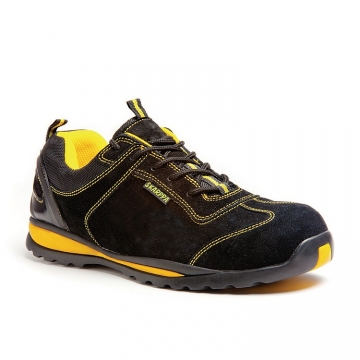
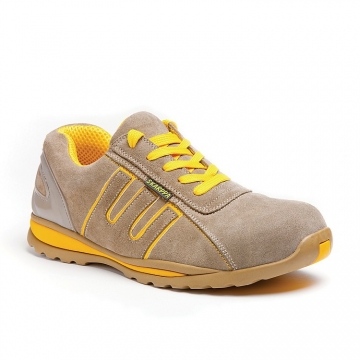
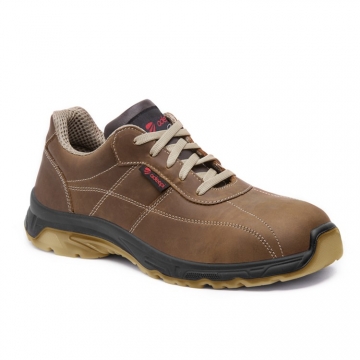
Different models of protective footwear finished in leather.
In turn, depending on the manufacturing material, two classifications are distinguished:
- Footwear made of leather and other materials. (excluding all rubber or all polymeric footwear.)
- All rubber (eg fully vulcanized) or all polymeric (eg fully molded) footwear.
The choice of personal protective footwear is not a simple process, but it is fundamental and must be the result of a rigorous study of the conditions and risks in the workplace. Once the occupational risk managers of each company have defined the risks, it is necessary to define the characteristics and performance that the safety footwear must have in order to respond effectively to the defined risks.
For this purpose, a whole series of factors specific to the origin and form of the assessed risks will be taken into account in each case. Some of these are:
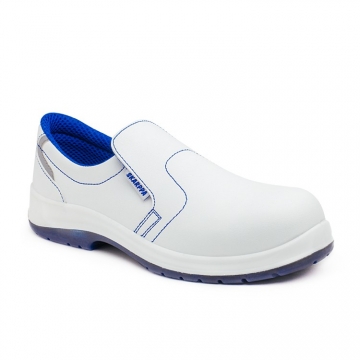
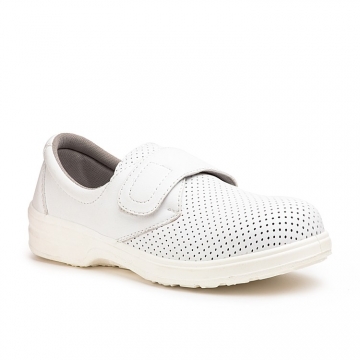
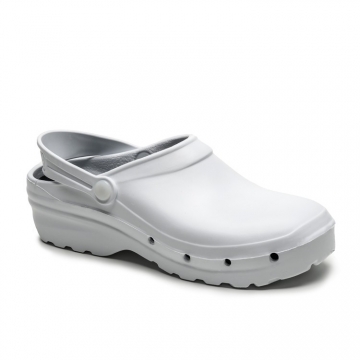
Professional footwear for the food and hospital sector.
• Resistance to impact in free fall.
• Resistance to projections of objects at speed.
• Resistance to crushing.
• Resistance to perforation.
• Resistance to folding.
• Resistance to chemical agents.
• Impermeability to water, solvents, etc.
• Anti-slip characteristics of the sole.
Footwear regulations as Personal Protective Equipment
From the quantification of the risks it will be obtained the determination of the necessary performances of the suitable footwear to the risks from which it is necessary to protect oneself.
Once the characteristics and performance of the footwear have been defined according to the risk and the other defined factors, the advice of the suppliers or manufacturers will be sought.
It is important to note that the advice of a specialized manufacturer or supplier will be of great help in the process of evaluating and choosing the most appropriate choice of compatible footwear.
As with all PPE, personal protective footwear must always be approved and must bear a quality mark that guarantees compliance with current regulations and technical characteristics.

